The varying or snowshoe hare as they are often referred, are native to Canada and northern parts of the United States, and a popular small-game animal found in the north. A true symbol of the north woods, varying hares are named for their varying fur coloration throughout the year. During the warm summer months, a varying hare exhibits the rusty brown coat allowing them to blend more easily with its environment. In autumn as temperatures drop the hare’s fur changes, in less than 2 months’ time, to a prominent white coat they keep throughout the winter.
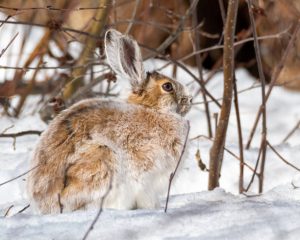
Source: Shutterstock
Varying hares are members of the Order known as Lagomorph, along with their smaller cousin the cottontail rabbit and the large European Hare, and the Arctic hare make-up the four rabbit/hare varieties found in the north country.
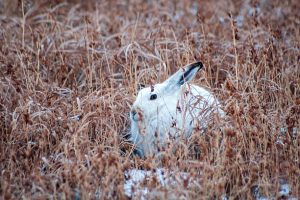
Source: Shutterstock
Varying hares have long ears and legs and a thick coat of fur compared to the more southern Cottontail. Hares’ also have huge fur-covered feet proportionate to their body size which helps keep them ‘afloat’ during the wintery snow conditions of the north.
Hare Population Patterns
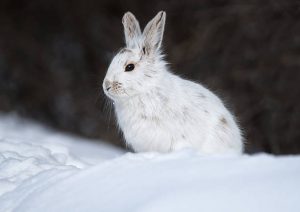
Source: Shutterstock
The varying hare’s predator-prey relation with the Lynx is a text book example of a ‘cyclical population pattern’ found in the north. Historical records taken over decades have noted that seasons when lynx numbers were low, so too were varying hare numbers. Although the cycle frequency isn’t always the same, hunters and trappers will tell you that every 7 – 10 years varying hare numbers will peak and then begin to decline.
Hare Distribution and behaviour
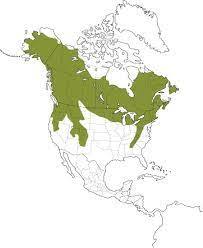
Source: Shutterstock
Varying hares are an animal typical of the boreal forest, found in most areas of the North and Northeast. They are active year-round and tend to be crepuscular, or most active early and late in the day, as well as slightly nocturnal where much of their feeding is done at night. Hares are found in mixed coniferous and deciduous vegetation, although they prefer conifers and often seek deep brushy cover during the day.
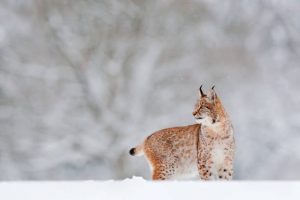
Source: Shutterstock
Varying hares are important, as a small game hunting and trapping resource, and ecologically important too, as forage for larger predators. Because of predators and environmental factors, hares rarely live longer than 4 years in the wild.
Hunting the hare
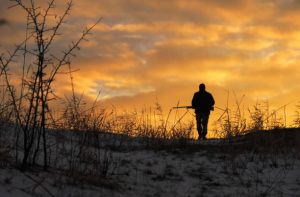
Source: Shutterstock
Hunting the varying hare is often carried-out with the use of hounds; to help flush the secretive small mammals’ from their tight daytime shelter, but they can be pursued without hounds as well. Those autumns with early snowfall followed by an unseasonable warm period during late November or December, will expose the whitened hares, to stick-out like a sore thumb against the drab-colored landscape. This makes them easier prey for hunters. When flushed from cover, varying hares can escape at nearly 30 miles per hour with an adult able to jump almost 10 feet in single bound.
Government recommendations
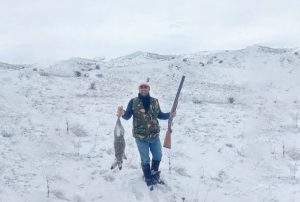
Source: Shutterstock
For field-dressing and preparing this game animal post-harvest, I suggest peeling the hide completely off and removing the tail prior to opening the abdomen, and discarding the entrails. I also suggest trimming away any shot-damaged meat and removing any pellets that remains. A varying hare carcass should be cooled and maintained at a temperature not exceeding 9 degrees Fahrenheit(4 degrees C), as soon as possible to ensure the best quality meat.
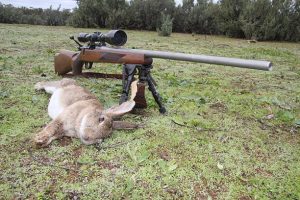
Source: Shutterstock
Should you bag a nice brace of varying hares and wonder how to cook them, try this tasty Hare Bourguignon dish from my Canadian Wild Game Cookbook.

Source: Author
Hare Bourguignon
Serves 4
4 varying hare legs (skinned & rinsed)
3/4 cup red wine
6-8 pepper corns
1/4 cup all-purpose flour
4 slices bacon, cut into 1 inch pieces
1 cup chicken stock
2 cups mushrooms, sliced
1 medium onion, chopped
1 clove garlic, crushed
1 tsp dried thyme
1 tbsp butter, softened
1 tbsp all-purpose flour
In a large bowl, marinate your hare legs in the red wine, bay leaf and peppercorns. Allow to marinate for a minimum of 3 hours, can be left overnight. Remove meat from the marinade, reserving the marinade for later. Cover the hare legs evenly with the ¼ cup of flour. Cook the bacon in a Dutch oven until crisp. Remove the bacon pieces and drain all but about 2 tablespoons of bacon fat. Add legs to the bacon fat in the Dutch oven and brown on both sides, about 10 minutes. Add the remaining marinade and remaining ingredients, except for butter and remaining 1 tablespoon of flour to the Dutch oven and stir well. Cover and bring mixture to a boil; reduce heat and cook for an additional 30 minutes. Mix softened butter and flour to form a paste. Gradually add to sauce and stir well. Return bacon to the Dutch oven and bring sauce to boil. Continue cooking until sauce thickens. Serve with fresh bread or dinner buns.
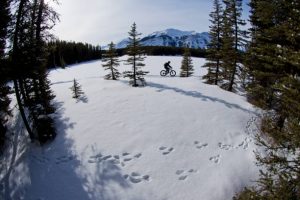
Source: Shutterstock
Anyone planning to hunt hares in Ontario, please consult the Ontario Hunting Regulations: https://www.ontario.ca/document/ontario-hunting-regulations-summary Those planning to hunt hares in the US or anywhere else in Canada, consult the Hunting Regulations for your province or state.
Learn more about wild game meat care and preparation, from the field to the table, in this other fine Hook and Bullet feature.

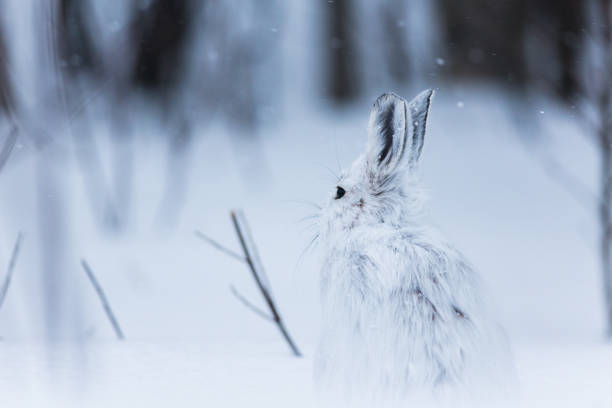
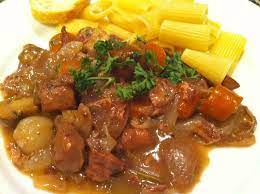
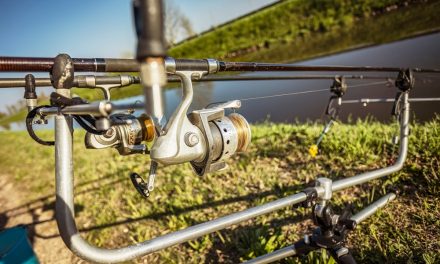
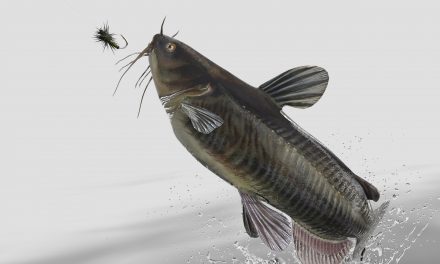
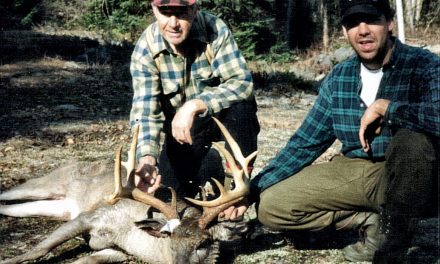
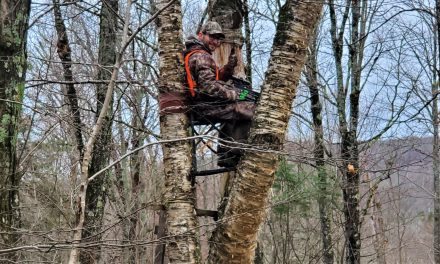
 E-Newsletter
E-Newsletter